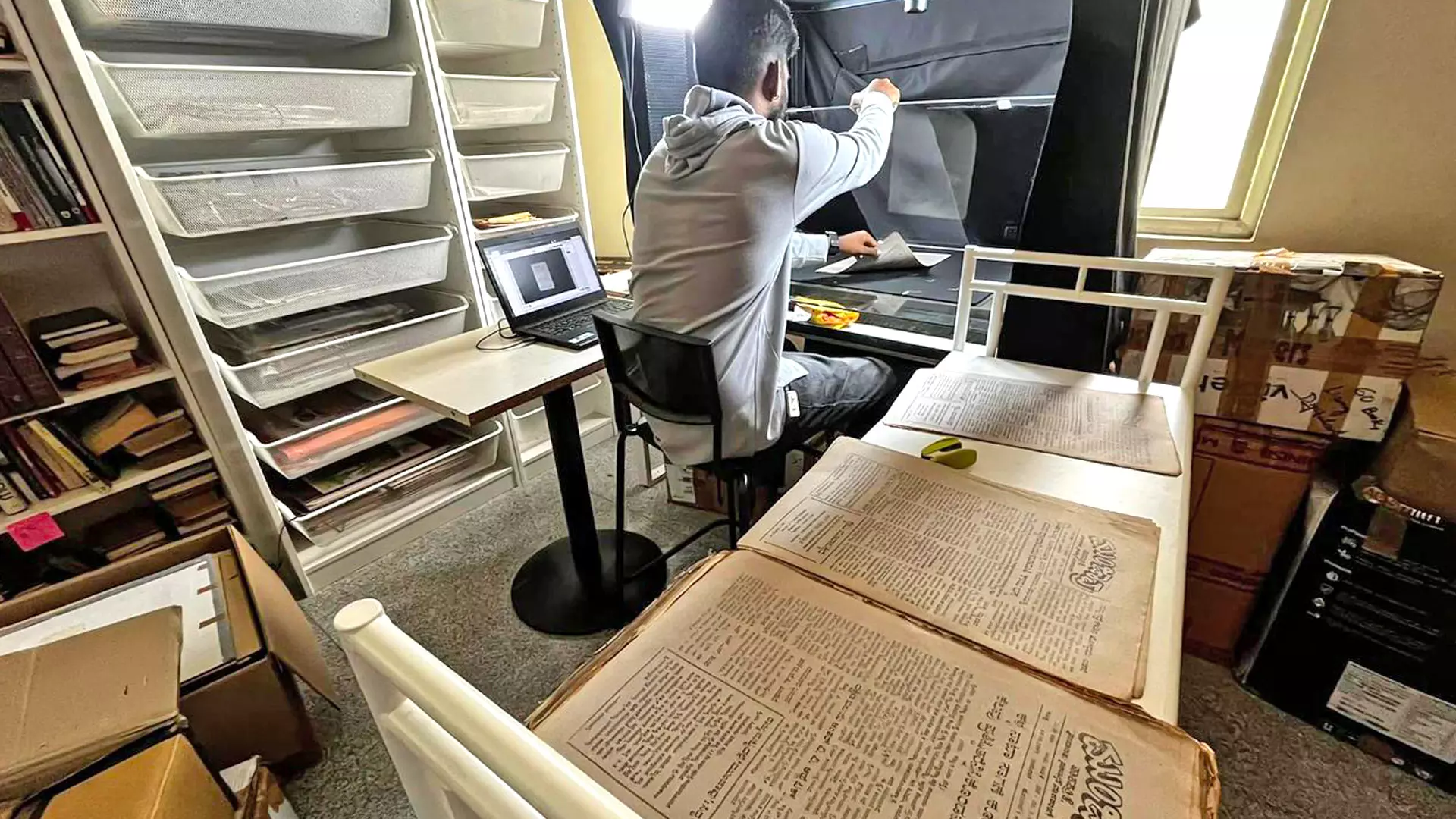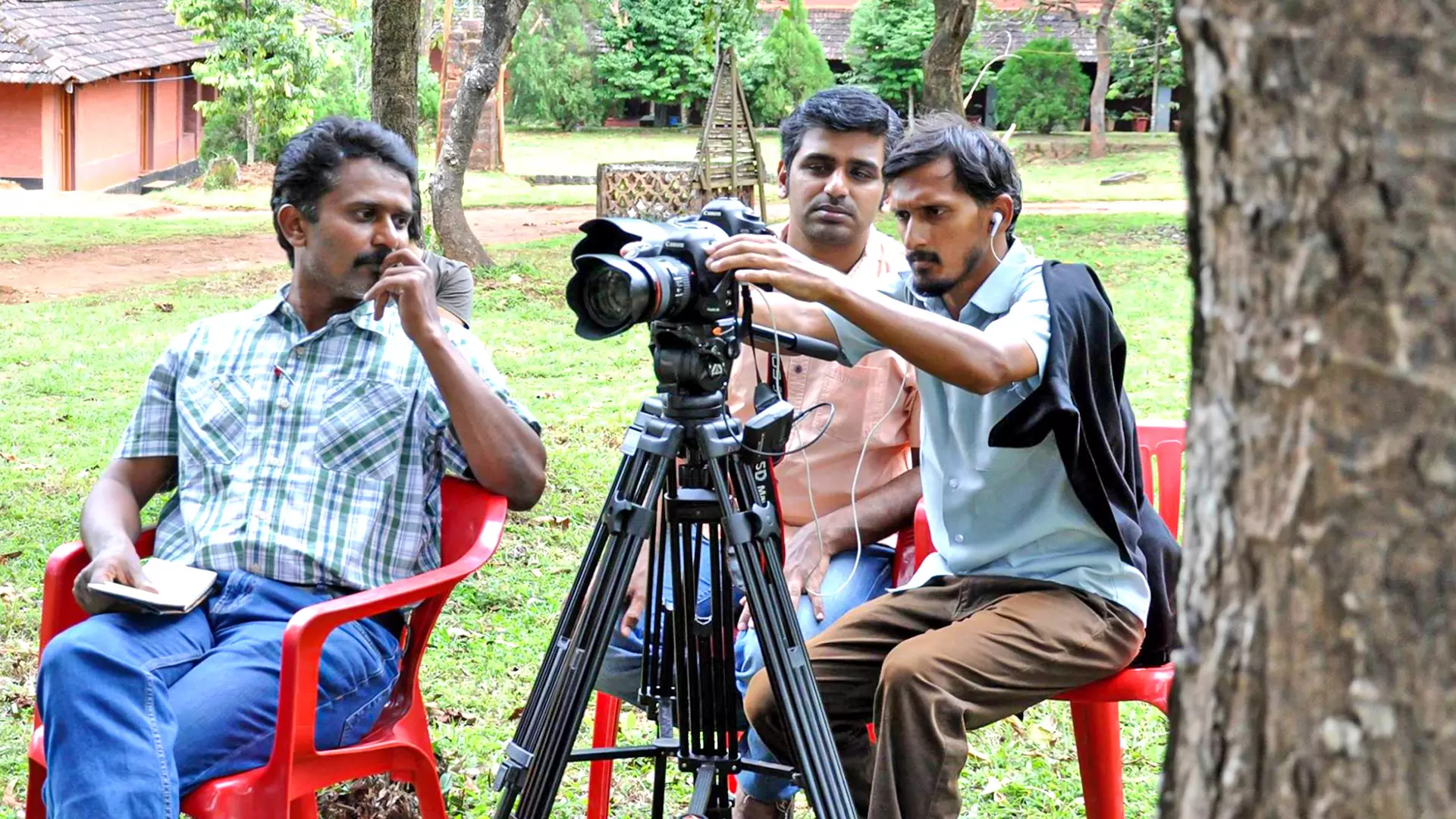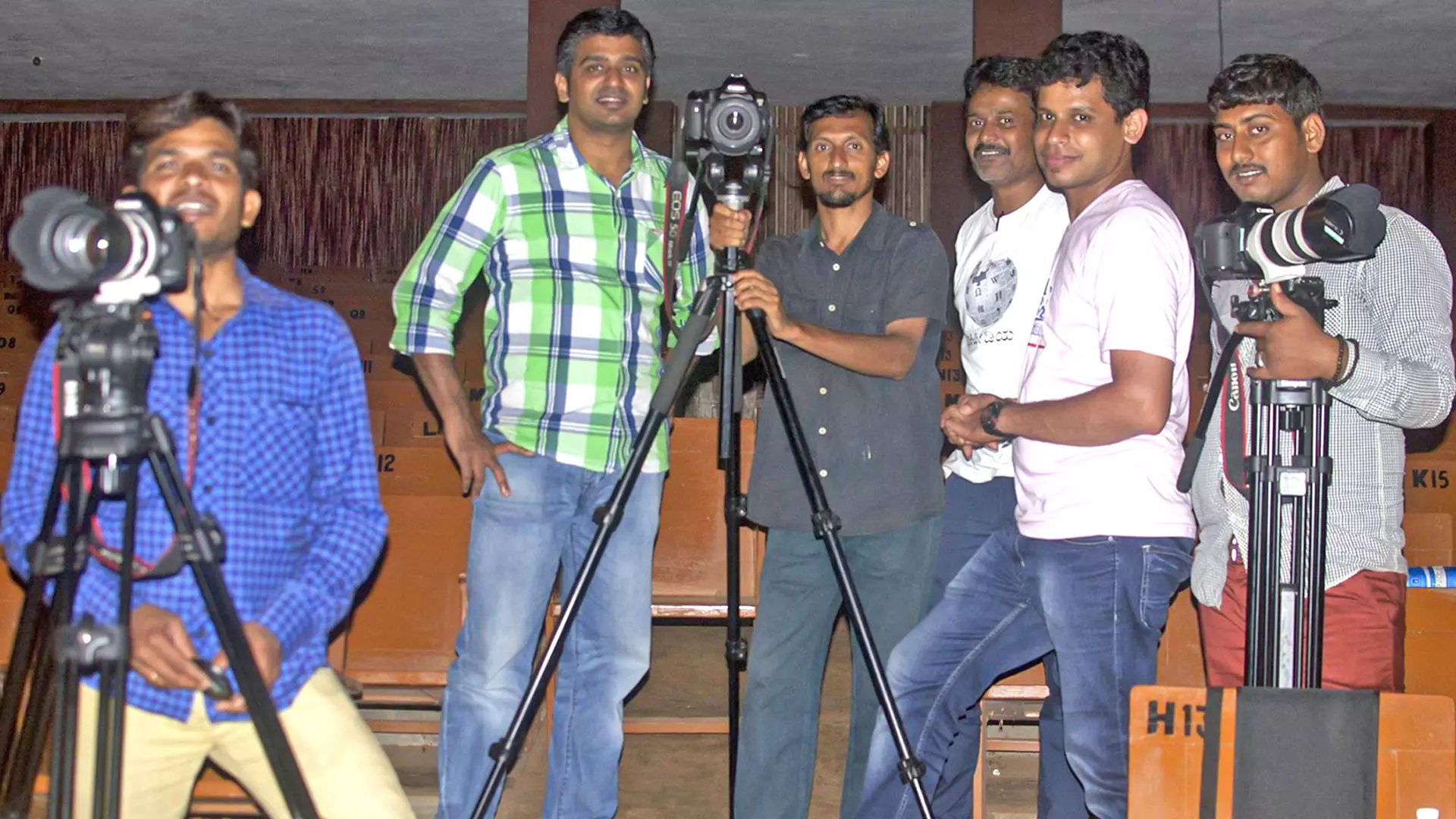
- Home
- India
- World
- Premium
- THE FEDERAL SPECIAL
- Analysis
- States
- Perspective
- Videos
- Sports
- Education
- Entertainment
- Elections
- Features
- Health
- Business
- Series
- In memoriam: Sheikh Mujibur Rahman
- Bishnoi's Men
- NEET TANGLE
- Economy Series
- Earth Day
- Kashmir’s Frozen Turbulence
- India@75
- The legend of Ramjanmabhoomi
- Liberalisation@30
- How to tame a dragon
- Celebrating biodiversity
- Farm Matters
- 50 days of solitude
- Bringing Migrants Home
- Budget 2020
- Jharkhand Votes
- The Federal Investigates
- The Federal Impact
- Vanishing Sand
- Gandhi @ 150
- Andhra Today
- Field report
- Operation Gulmarg
- Pandemic @1 Mn in India
- The Federal Year-End
- The Zero Year
- Science
- Brand studio
- Newsletter
- Elections 2024
- Events
Sanchi: On a mission to conserve and preserve Kannada culture and art for posterity

Theatre practitioners of the day, who have missed watching classic plays directed or written by doyens of Indian theatre have a reason to rejoice. They can now access classical plays such as Gokula Nirgamana by BV Karanth, Neerina Tana, an adaptation of Water Station of Ota Shogo by Shankar Venkateshwara, and Smashana Kurukshetra of Kuvempu and Sangya Balya by Jnanpith recipient writers;...
Theatre practitioners of the day, who have missed watching classic plays directed or written by doyens of Indian theatre have a reason to rejoice. They can now access classical plays such as Gokula Nirgamana by BV Karanth, Neerina Tana, an adaptation of Water Station of Ota Shogo by Shankar Venkateshwara, and Smashana Kurukshetra of Kuvempu and Sangya Balya by Jnanpith recipient writers; Kuvempu and Chandrashekara Kambara respectively, all with the click of a button.
Similarly, researchers can now access the audio-visual performance of Yakshagana and Bayalata — a traditional theatre that evolved from pre-classical music and theatre during the period of the Bhakti movement, which combines dance, music, dialogue, costume, make-up and stage techniques with unique style and form — besides interviews with noted cultural personalities among other gems of art. Thanks to the initiative of Sanchi Foundation, a not for profit forum, which has made significant strides in documenting and preserving Karnataka’s rich heritage of art, history and culture.

Since the past few years, Sanchi Foundation has been making significant strides in documenting and preserving the rich heritage of art, history, and culture of Karnataka.
Had Sanchi Foundation not saved the decades-long collection of amateur theatre treasures of HV Venkatasubbaiah, fondly called as Subbanna in theatre circles, those invaluable theatre repertoire, theatre fraternity of Karnataka would have lost, priceless intellectual treasure hidden in the labyrinths of forgotten cupboards in his theatre documentation centre ‘Ranga Mancha’ (theatre platform) – a major part of theatre culture would have been lost forever. Sanchi Foundation has painstakingly archived hardcopy formats in native-style. Family members of Venkatasubbaiah and theatre fraternity say they are hugely indebted to Sanchi for preserving and protecting in digital form.
From VHS tapes to digitalization
“Most of the plays staged in Ninasam theatre repertory were recorded in the Video Home System (VHS) mode, a type of analog video recording tapes format from the 1970s to the early 2000). These tapes were decaying because of a lack of attention. They would have faded away because of decolourisation and blackening. There was a fear of permanently losing the visuals and footage altogether, had it not been conserved and protected. Sanchi Foundation, with the support of Ninasam, initiated the process of digitization of the tapes. Sanchi finally succeeded in its endeavour and made landmark plays in Kannada theatre ecosystem available for the study and research of theatre lovers,” explains Abhaya Simha, National Award winning filmmaker and one of the founding members of Sanchi Foundation.
Since the past few years, Sanchi Foundation has been making significant strides in documenting and preserving the rich heritage of art, history, and culture of Karnataka. As part of this mission, its linguistics arm, Sanchaya, has played a pivotal role in archiving literature and developing various open knowledge initiatives.
Sanchi Foundation has uploaded over 418 videos, which have garnered the support of more than 23,000 subscribers, 3 million+ views, and 395K+ watch hours on YouTube so far. Sanchi Foundation has audio-visual documents of plays, Ranga Sangeetha (songs of theatre, especially professional theatre), interviews of noted personalities including scholar, historian-writer-linguist late Dr S Settar, wildlife and conservation filmmaker Shekar Dattari, science writer Nagesh Hegde, wildlife conservationist Ullas Karanth and others from various fields.
Sanchaya is expanding the work of Sanchi Foundation in documentation of theatre by archiving magazines, photographs, negatives, films, CDs, and DVDs from various individuals in the field. Current projects include the works of SK Karim Khan and HV Venkatasubbayya. Additionally, the archival efforts extend to preserving the works and personal collections of renowned figures such as Srinivas Havanur, GT Narayana Rao, Krishnanda Kamat, Pa Vem. Acharya, Chennaveera Kanavi, and DS Nagabhushana. These archives not only cover their literary contributions but also offer invaluable insights for future research into the history of Kannada language.
Dissemination of knowledge for free
It all started in in 2014 when three brilliant young minds, with a deep concern for the documentation of various streams of knowledge came together with an ambitious idea of archiving every kind of human expression of creative skills and imagination for passing on the knowledge to future generations. They created Sanchi Foundation as a portal for documentation and archiving the cultural knowledge of the land. The basic idea of these three enthusiastic youngsters was to make their documentation available for public use for free.

Sanchi, a unique crowd-funded project steered by filmmaker Abhaya Simha, digital technologist and archivist Om Shivaprakash and digital strategist and writer NAM Ismail, has decided to focus on theatre and initiated the process of audio-visual documentation of three plays including Gunamukha of P Lankesh, Tartuffe, the Kannada translation of Moliere and Oresteia by Aeschylus staged by Ninasam, a premier theatre school in Karnataka.
“Three productions of 2015 by Ninasam were recorded in a multi-camera set up and edited to state of art audio-visual standards, besides adding various additional features to it,” says NAM Ismail, a journalist-turned-writer and digital expert in his own right. “It was an attempt to record and put up the content online for anyone to watch for free across the globe and create a global audience for Kannada plays, whose reach is limited due to the language constraints,” he explains.
The plays, thus recorded, are available with English subtitles and are catering to those interested in studying them for academic purposes. These videos have interviews and notes from the directors and critics.
Paucity of funds
“Initially, we were so ambitious that we planned to take up video recording on a large scale basis, but we were forced to restrict the scope of the project because of the paucity of funding,” says Om Shivaprakash, a Bengaluru-based technologist and digital archivist and founding member of Sanchi Foundation.
“We reached out in our circles for funding. It was a big challenge to pool in resources,” he added. However, he did not forget to acknowledge the support from several artists and technicians, who came forward to work free of cost for the project. Speaking to The Federal, internationally renowned filmmaker Girish Kasaravalli, who is all praise for Sanchi’s efforts said, “After Kannada Nataka Kannadi (Mirror of Theatre) no attempts were made to document plays. Sanchi Foundation’s attempt is now facilitating teachers, students and enthusiasts of theatre to revisit works directed by stalwarts of theatre.”
Asked what motivated the three young minds to take up digitalization and what comes under their purview of conserving and preserving knowledge base, Abhaya Simha said, “Our focus is on preserving and promoting the rich cultural heritage. Through various projects, we work on digitising rare Kannada literature, archiving traditional visual arts, and producing documentaries on local art forms. Our repository of knowledge comprises extensive documentation of Yakshagana, Bayalata, Talamaddale, performances of Carnatic classic music and Kathakali, besides recorded opinions and interviews of prominent figures of these stream of native cultural forms,” says Abhaya Simha.
Culture-based knowledge
Underling the urgency of digital documentation of various streams of culture-based knowledge, Abhaya Simha notes, “History is written based on various knowledge sources documented from time to time. Today, we have a lot of such documentation done in various corners of the world. However, locally in Karnataka, we do not have enough documentation. Some of the collections available are exclusive and it is difficult for the common man to access them and use the knowledge stored there. Also, the problem is that they are not centralised for easy access. How many can access the repository of 14,000 films available in National Film Archives of India (NFAI)?” he asks.
The ambition of the organisation is reflected in its name Sanchi, meaning ‘collect’. The word Sanchi might have originated from Sanskrit or Pali meaning “to store or save”. In folklore, Sanchi is a bag carried by people to safeguard money, among other important things. “It is a Digital Conservation Foundation, which is documenting all possible material concerning art, history, culture and literature and is archiving ‘for future-for us-for everyone’,” says Om Shivaprakash.

“In the process of archiving, Sanchi Foundation has initiated the documentation of knowledge of the learned people among us, thus creating an archive for the future. It is capturing the human expression of creative skills and imagination for reciprocating the knowledge to the next generation. We are capturing collective human intellectual achievement in audio-visual format to relive those moments for generations to come,” says writer Ismail.
The hurdles
Initially, the three archivists faced several issues as documents that were made available were in a ‘non-retrievable state’. “We do documentation in folk, classical art forms and other streams of knowledge on a priority basis. Documentation is something which is largely ignored by many. Some understand the importance, but are not sure what is the best way. Some people store cultural records thinking that they are protecting them. But they don’t know how to protect, preserve and take them to the community. Keeping this in mind, we also want to create online material about documentation. We would also like to do workshops and train people in documentation. We hope this effort will yield results in the days to come,” says Om Shivaprakash.
Om Shivaprakash, who has been into digitalization of classics of Kannada literature for the past two decades, and is influenced by the free software movement, said, “Documentation is largely neglected in our society. Some understand its importance, but they are not sure about the best way. Keeping this in mind, we have created online material about documentation and we are training people in the documentation process. We are engaged in this endeavour, just to create an awareness of the importance of documentation for future generations.”
Archiving with stress on history and culture
Sanchi encompasses video, audio, text, and training sections. Video section contains video documentation, short films and other curated video content. “Though the general idea is to have video documentation, we are open to all genres of video contribution for this section,” says Ismail. The audio section contains audio documentation of various great personalities, oral traditions and so on. The text section contains several unpublished books, copyright opened to Creative Commons, and some exclusively written write-ups for Sanchi.
“We are open to all genres of text contribution for this section. The training section has write-ups on various aspects of documentation. This is a platform where anyone can discuss issues related to documentation and various cultural aspects. We also conduct occasional workshops on various aspects of documentation,” he details.
“Our commitment to open knowledge sharing is evident through our collaboration with Ninasam, where we contribute to making Kannada language resources freely accessible. All our efforts are shared under a Creative Commons license, ensuring that anyone interested in Karnataka's cultural heritage can access our work freely. In addition to archiving, we actively document and support folk performances and regional language initiatives. These efforts are crucial in ensuring that traditional art forms and cultural expressions are not lost to time but are instead preserved and celebrated. Our partnership with Ninasam is a significant part of this mission, as it allows us to expand our reach and impact in promoting open knowledge sharing in Kannada” Abhaya explains.
Over the past decade, the Sanchi Foundation has made significant strides in documenting and preserving the rich heritage of art, history, and culture. As part of this mission, its linguistics arm, Sanchaya (Sanchaya.org), has played a pivotal role in archiving literature and developing various open knowledge initiatives. In line with its mission. Sanchaya has also taken significant steps to capture the essence of coastal Karnataka by archiving the works of Yakshagana, Tulu, Konkani, and Arebhashe. It is on a mission to extend its reach across other dialects, folk literature (Jnapada), and the broader literary landscape of Karnataka through community collaborations.
Public participation
“Sanchi wants to make its documentation available for public use for free. Projects taken up by Sanchi are based on gracious donations by generous donors. We also depend on community participation for documentation,” says Abhaya Simha asking the people, who possess rare videos of famous personalities, places, processes, any audio clips, and text, or video clips to donate them to Sanchi and invite them to work together in the process of documentation.
The founders want their work to carry on even in their absence.
“We want the process of documentation to continue uninterrupted even in our absence too. We just set the ball in motion and every sensitive soul should share the responsibility to take it forward,” says Abhaya Simha, Omshivaprakah and Ismail in unison.
